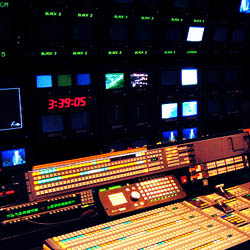
As a professional sound designer and editor, I’m asked often about my workflow approach when starting a new audio-post project.
I thought about it for a while and tried my best to put into words the best advice possible for someone just starting in the business.
My very first step is to watch the video nearly locked with no interruptions so I can experience it one time as an audience member.
After that, I’m too close to the material to have that perspective so I cherish and relish that initial experience.
Next, I prefer to hold a spotting session where I talk with the director (et al) about their vision for the sound and the possible overall approaches to take.
Then, we go through the film together and talk specifically about certain sound moments. This step alone saves a lot of time and possible misunderstandings.
So what gets delivered to me? Technically, I need an OMF and a rendered file of the video. I translate the OMF using super secret software, to a format I need. Sometimes I get a drive with all the media and the NLE project files instead, so then I turn to an assistant who opens the files and generates the OMF(s) as I don’t use Final Cut Pro or Avid.
Once the files are translated to the DAW format I can use, usually Sony Vegas Pro, I begin the work of figuring out what the heck the picture editor did. More often than not the timeline is a total mess and it takes some time to separate dialog from temporary sound effects and music that have been combined, which always seems to happen for reasons that pass understanding.
I always copy all of the original audio tracks, mute them, and store them at the very bottom of my timeline. This way I can always find the originals should I mess up big time (it happens!). The audio from the video render file is my sync reference (along with frame rate and sample rate).
Once the better part of a day has been spent getting the tracks organized, the real work begins.




















